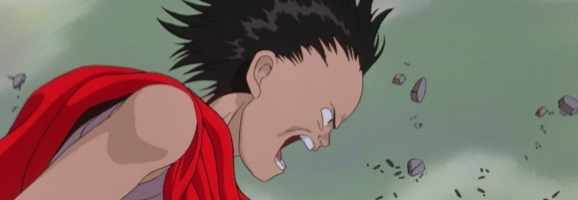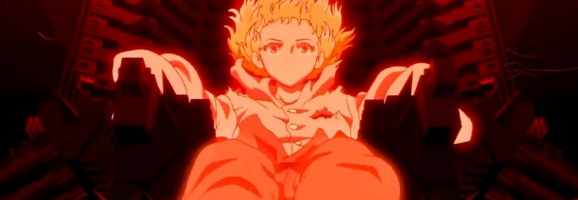Akira, Metropolis, and the Quest for the Übermensch in Postmodern Japanese Animation
Friedrich Wilhelm Nietzsche conceived the Übermensch—English translation: “super-human”—in his 1883 book, Thus Spoke Zarathustra: a Book for All and None. Just as Nietzsche’s protagonist venerated the Übermensch as the crowning achievement of human existence, so the Nazis—inspired by the philosopher—sought to create a super-human Aryan race through large-scale eugenics programs. While the early stages of Nazi eugenics were lauded even among the Allied nations—America itself practiced compulsory sterilization well into the second half of the 20th century—its later measures, such as Josef Mengele’s human experimentations, have rightly come to represent the ultimate, horrific terminus of any breeding program.
While World War II brought cultural upheaval to nearly every corner of the globe, its effects are arguably most observable in Japanese media. The antagonists of Japanese kaiju films—such as Godzilla (1954) and Gamera (1965)—are monsters mutated by nuclear radiation, and this use of on-screen atomic attacks to generate cathartic audience responses after Hiroshima and Nagasaki mirrors the post-9/11 boom of city-razing, skyscraper-leveling catastrophes in American films. The cleanup of destruction caused by similar catastrophes in Japanese cinema is always shown in the end, as a testament to Japan’s persistence and improvement after every adversity. Perhaps most interesting in post-WWII Japanese films is the result of Japan’s alliance with the Axis Powers: an obsession with the Übermensch, and the consequences of producing it.
Akira
In director Katsuhiro Otomo’s 1988 anime film, Akira, the Japanese government secretly experiments with psychically-talented children—known as Espers—the most powerful of which is the eponymous Akira. The film is set in 2019, 31 years after Akira realized his true power, moved past corporeality into another dimension, and destroyed most of Tokyo, instigating World War III in the process. In Neo-Tokyo—a new city built atop the ruins of its namesake—a young motorcycle gang member Tetsuo exhibits abilities similar to Akira’s, and thus becomes an Esper in the government’s program. Tetsuo’s surge in ability proves too great for him to control, however; he quickly turns to recreational murder as his mind becomes corrupted, and, as his physical body cannot bear the strain of his excessive power, he morphs uncontrollably into a monstrous blob by the end of the film. At this point, the other Espers arrive to save Neo-Tokyo from another tragedy; they summon Akira to remove Tetsuo from their dimension, and join forces to save the innocent humans in the area, sacrificing themselves in the process.

It is interesting to note that at no point in Akira does the Japanese government believe they have successfully created an Übermensch, when they have done so, in fact, several times over. Akira’s explosion out of their dimension, Tetsuo’s maniacal rampage, and the physical fragility of the other Espers are all seen as abject failures. However, although both Akira and Tetsuo are wildly destructive forces to be reckoned with, they are inarguably super-human; the government scientists erroneously attribute their corporeal dissolutions to their ultimate deaths, proving how far outside the finitude of human understanding these two Übermenschen exist.
The other Espers are benevolent demigods in comparison, possessing neither the strength nor the indifference toward humanity exhibited by their most powerful counterparts. Their extreme altruism, shown by their willingness to commit suicide in order to save one or two bystanders, is also super-human in nature—as apoptosis is not something humans to which humans are innately inclined—and should therefore not pass by unacknowledged. The Espers also hint, just before their ultimate exit, that the project might, in fact, be more successful than anyone has expected; some people, unaffiliated with the government experiments and born after the Akira explosion, have begun to exhibit psychic powers.
Metropolis
Rintaro’s 2001 anime, Metropolis, follows Kenichi, an aspiring private investigator who accompanies his uncle to the titular city in order to investigate allegations of Dr. Laughton’s human rights violations. The titular city of Metropolis presents itself to the world as a human utopia, where menial labor is performed by sentient robots who are essentially rights-less slaves. When Dr. Laughton’s lab explodes, Kenichi rescues a human-like robot named Tima from the wreckage, whose intended use is to govern the entire city of Metropolis from a seat of power located within a massive government building, known as the Ziggurat. After spending time with Kenichi, the robot, Tima, believes herself to be human. She learns her true purpose at the film’s climax, and thus refuses to maintain the status quo in Metropolis. Tima takes the throne and orders the other robots to revolt, causing massive destruction across the city, and ultimately bringing its upper level—where humans resided—crashing down into the robots’ undercity abode. At the end of the film, Tima is physically destroyed—although the film strongly suggests that her mental awareness remains alive in the aftermath—along with the rest of Metropolis, and humans work alongside robots to rebuild the city.

Metropolis is almost directly linked to Nazism, in both its history and plot elements. The film is a loose adaptation of Osamu Tezuka’s 1949 manga of the same name, which was loosely based, in turn, on Fritz Lang’s Metropolis (1927). While Lang fled Germany shortly after Adolf Hitler’s rise to power, his wife—and Metropolis (1927) co-writer—Thea von Harbou was a member of the Nazi party who worked under propagandist Joseph Goebbels to produce pro-Nazi films. Rintaro’s 2001 adaptation draws heavily on German history to flesh out its titular city. Metropolis’ robots bear a striking resemblance to Jews in Nazi-occupied Europe: they work grueling hours for no pay, must present clearance passes to travel between city levels, may be killed on sight for any reason, and are denied even the most basic rights, such as the right to a personal name. Despite all this, Tima, the Übermensch in Metropolis (2001), rises out of this oppressed portion of the populace, much the same as the Nazis’ creation of the Aryan race was to come from Mengele’s torture of so-called undesirables. The equality attained at the end of the film allegorically represents the Allied liberation of Europe in 1945.
Both films present the Übermensch as an easily-obtained achievement, but not one which can be used as its creators intend. The Übermensch is inarguably super-human, above and beyond all human capacities, particularly the corporeal. In Akira, both Akira’s and Tetsuo’s physical bodies disintegrate due to the sheer magnitude of their powers. Similarly, her ascension to the throne mars Tima’s human-like visage, and the resulting disaster in Metropolis crushes her body. However, in Tima’s case, it is important to note that she was never human to begin with; the Ziggurat could not be controlled by a human, and so Tima’s supposed humanity was always in direct opposition to her super-humanity.
Not only is the Übermensch uncontrollable, it is also unknowable; throughout both films, the human characters struggle in vain to understand their super-human counterparts—their natures, purposes, desires, intentions, and capabilities—to the point that purporting to understand becomes an act of sheer hubris. When Tetsuo begins his bloody campaign through Neo-Tokyo, ignorant crowds fill the streets to cheer him on as Akira, the risen savior, only to be killed by the power-crazed Esper. In Metropolis (2001), both Duke Red and Rock die by Tima’s hand: the former for attempting to control the Übermensch, the latter for attempting to kill it.
Ultimately, the representations of the Übermensch found in both Akira and Metropolis (2001) reveal the extent of WW II’s influence on Japan. Simultaneously positive and negative, this influence produces cultural landmarks that are enthralling enough, and alarming enough, to serve as warnings for future generations. However, buried inside these admonitions against nuclear arms and eugenics is the promise of humanity’s fated progress. Even in the wake of total devastation, humankind lives on armed with new experiences and lessons, and both Neo-Tokyo and Metropolis rebuild.
The ultimate message in Japanese representations of the Übermensch, is not that super-humanity is good, but that it is an inevitability. Humans constantly improve, growing smarter and wiser with each generation. They may be set back, even by their own foolish aspirations of progress, but they come out stronger on the other side. The quest for the Übermensch is folly, only because it is coming on its own time.
What do you think? Leave a comment.











I have never heard the term Übermensch before, but now that I do, I realize now how many stories use it. Really good article!
Thank you, I’m glad you enjoyed it. And yeah, Nietzsche’s ideas and terms are really very prevalent. The Übermensch/Untermensch dichotomy has to be used very carefully, though, because of its ties to Nazism.
It’s a shame that Metropolis didn’t get the attention it deserved like Akira. This is a damn good movie with a great subplot, the characters are so enjoyable, and Rock is a bad-ass villain!
I agree. I meet so few people who have seen it. When I rewatched it after ~10 years of not having access to it, the references to Nazism were much more obvious than they had been before.
I just watched Akira for maybe the tenth time over 15 years or so. Something keeps drawing me back to it. Can’t really say for sure what. The first time I saw it I had NO idea what I was seeing. The more you watch it, you put things together.
Absolutely. Have you read the manga? It explains some of the more confusing bits.
Akira, more than any movie I can think of, is one that you don’t have to understand to enjoy. The experience in and of itself is one worth having. No matter how many times I see it, that feeling never seems to fade.
Akira contains many tropes derived from the history of Postwar Japan. In addition to references of the war, the fear of an authoritarian, militaristic, or ultranationalist coup is referenced, relating to the political turmoil of the 1960s and 1970s.
In the manga the government of Neo-Tokyo reverts to feudalism, with petty warlords, personal armies, and an emperor who is worshipped as a god. References to atom bombs are obvious, Tokyo itself being destroyed not once, but twice, in energy bursts resembling nuclear explosions. The motif of Tokyo being destroyed, rebuilt, and destroyed again references the earthquake of 1923 as well as the devastation of World War II.
Thank you for that. I didn’t know about the earthquake.
I have always loved anything the Japanese make, films especially.
I always had issues with akira (movie), the way it finished just seemed so wrong, until I read the manga a couple of years ago, and afterwards it actually made sense. I actually re watched it, and now wish they would make a sequel/ cocontinuation. And I have loved metropolis since it came out
Metropolis and Akira are quite an experience.
Anime has never been something I felt drawn to, yet there are many titles to which aficionados of the genre/style will always point you and which have achieved a sort of name recognition among those who wouldn’t necessarily consider themselves fans. AKIRA is definitely one of those films. I have been a fan of it from day one. I always welcome studies on it like this one, thank you.
I think the Ghibli films also have that kind of recognition. I think plenty of people who wouldn’t consider themselves anime fans have enjoyed Princess Mononoke and Kiki’s Delivery Service.
Metoroporisu is a gorgeous movie.
Love Metropolis and have a strong attachment with Akira. It was one of the first high profile Japanese animation movies to break through to the mainstream.
Akira more or less got the ball rolling for anime and manga distribution in North America.
Can someone explain Tetsuo story to me? From the flashbacks at the end I got an hint as to what Tetsuo story is but I bet the manga goes deeper.
So, the prematurely aged kids, Akira and Tetsuo were all friends from the same orphan house right? And did they have powers or the power were created by the experiments?
If so why Tetsuo doesn’t seem to remember the three aged kids were his friends/classmates? Also why he doesn’t seem to remember who Akira is?
And how he got into Kaneda’s group if he was held at the clinic/hospital for tests and experiments? Did he run away?
And why he develops his power better only later and not as a child?
Okay, I’m going to try to answer this as best I can.
Tetsuo was not friends with Akira and the other Espers. They did go to the same orphanage, in theory, but the 1st generation Espers were there 30-40 years before Tetsuo. The Akira incident happens in 1988 (’82 in the manga), and the Tetsuo/Kaneda story begins in 2019.
Tetsuo’s powers are awakened only after his contact with Takashi: the Esper who has escaped the facility at the beginning of the film.
I think your confusion may stem from how Takashi kind of resembles a young Tetsuo in the flashbacks when the ‘aged’ kids were younger. Basically, the ‘aged’ kids were really children back 30 years prior to the events of the movie, along with Akira, as you see in flashbacks. Then the whole Akira thing happened.
About 20 years later, a young Tetsuo met a young Kaneda and became friends, which was shown in a different flashback.
The ‘aged’ kids are actually over 30 years old but have somehow remained in children’s bodies, apparently mutated physically by their power or the government or something.
I find it interesting that this concept carried over from nationalist ideas from the early 20th century.
Metropolis is simply one of the finest pieces of work I’ve ever seen.
Great thesis.
Thank you. 🙂
The story of metro is absurd and seems to drift without any direction really.
A brilliant article. I wholly agree with the points you made and the conclusions you reached at the end. Humanity is great at bringing its own downfall: it’s as if with each great technological advancement we ruin a bit more of the planet or open the pandora box wider. I think the main point of the works you mentioned (two of an ocean of masterpieces) is that progress – may it be technological, creative, or whichever – will almost always come with a cost.
Really nice article! I’m wondering what this implies about the current Japanese worldview. Unlike Nietzsche, who seemed to think of the ubermensch in terms of moral development, or the Nazis, who thought in racial terms, both of these works (fitting in with the modern day image of Japan) seem to focus on technological or scientific advancements being key to this evolution of humanity.
The issue I had with Metropolis is it didn’t give me anything strong to take away.
Both are cult classic. Waiting for bluray release of Metrop though.
I always found it oddly romantic how films like Akira, Godzilla, and Metropolis (the anime) show how a culture has struggled in a post-WWII world. Just how we wished we had a Übermensch to stop the Nazis (Captain America, Superman, and every other comic produced in that era), the Japanese created their heroes to cope with the bomb. Also found it ironic that Rock resembled a Nazi the most out of everyone, yet didn’t believe in the idea of a Übermensch, or that it could be a robot.